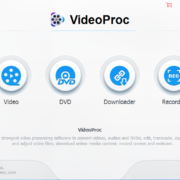For most college students, the real battle begins once they graduate. Most of them soon realize that finding a job isn’t that easy. This is why it’s important to build a portfolio website. Not only can your portfolio help you showcase your knowledge and your best work, but it can also help people reach you.
A good website built on Pixpa gives you the option to market yourself, network, and do some personal branding. All of these are essential things which will help you stand out from the rest and land more jobs. No matter if you’re a fresh graduate or not, you need to have a website of your own.
This is no longer a matter of preference. Here is how to build a personal portfolio website without banging your head against the wall.
Make a selection of the best examples of your work
Every creative professional has a lot of different projects behind them, and not all of them are good. This is why it’s important to go through the work you’ve done, and pick out only the best pieces to display to potential customers.
If you still don’t have enough work that you’re proud of, postpone building your portfolio website and wait until you have enough examples to show. Here are some of the most important things you should keep in mind when choosing the best examples:
Variety
Of course, everyone has a single area in which they excel, and this is completely natural. However, just because a certain type of work suits you doesn’t mean that you should include only examples of that kind of work. If you do this, it will seem as if you are focused on only one type of work and that you don’t know how to do anything else.
Additionally, it will look as if you lack creativity and are stuck in your comfort zone. Furthermore, not all projects require the same design style, and for these reasons, the best thing is to have variety in your portfolio.
“For the best results try several different vantage points and distances of the same subject” ~ Bruce Lovelace
High-Resolution
The image resolution is very important, even if your whole portfolio is online. Potential clients often demand a physical version, or they might ask you to print some of the work for them. Additionally, images will be more visually appealing when they are perfectly placed, as clients will be able to see all the tiniest details in your work. Sometimes you have to make sure the images are not too large, you can use any image resizer app listed here if you feel you need to crop or resize the image.
It’s also important to remember that your portfolio website can be used to actively promote yourself as a professional. One of the best ways to do this is by sharing content on social media and images can give you the best results.
You are allowed to include unpaid work
If you don’t have a lot of experience, and you still haven’t worked with many clients, your options might be limited. However, this doesn’t mean that you can’t include projects you’ve done for free while you build a portfolio website, the practice work you’ve done for online contests.
It doesn’t have to be work that you were actually paid for. The purpose of your portfolio is to showcase your strengths and show how deep your skillset is – it doesn’t matter to new potential clients whether you were paid or not.
Make the examples flow well
Building a portfolio website takes a bit of design work. Take the whole thing seriously and ensure that it looks neat and logical. You can’t just put in random work together and throw them up on a website. Pay attention to the designs themselves, their color, and their dimensions.
Consistency is the key. For example, you can change the style of designs by page, and this is how your visitors will get a better idea about your work. You can also add flow to your portfolio in terms of quality. Put your best work first and then let it gradually decrease in quality.
Most people will just look at a couple of the first examples, so they’ll get a great first impression.
Check out the competition and templates
If you haven’t done this before, it’s generally a good idea to take a look at what others are doing to create a portfolio website. Of course, try to find website portfolios of successful professionals that many people have heard of. This is how you can get a better idea of what your site should look like.
On top of that, make sure that you try out different website templates and see which one works best for you. When doing this, consider your designs, your style, logo, and colors. Bear in mind that your site needs to look good as a whole and provide visual consistency. By doing all these will learn how to build a portfolio website.
Research and examples
No matter how you decide to build a portfolio website, you will have a lot of theme and template options to choose from. Even website builders offer variety, and you can take your time when customizing your portfolio. Additionally, make sure to search for some of the best portfolios to see the latest trends and practices and get some inspiration.
Bear in mind that your portfolio site can also be your business site, which is why it’s generally a good idea to read some resources on that topic as well. When you consider both aspects of your site, you will be able to create a strong online presence through which you can find new jobs.
Mix and match
After you’ve chosen the most important pieces in your portfolio and all the elements you need to include, you have to match them perfectly.
You need to ensure that your site is cohesive if you want to form a brand that will leave an amazing first impression. The portfolio can’t look like it features the work of several different people – it needs to be consistent throughout.
Once you’ve chosen all the key pieces, mix them together – combine them with different colors, change positions, and create a family of visuals that will represent your personal brand. Test out horizontal and vertical options, different logo positions, and so on.
Don’t rush things
Many professionals are anxious to get out in the online world and start working with clients. However, because of this, they often like to speed things up, which is how they end up making a lot of mistakes along the way. The end result – their website portfolio looks awful and doesn’t help them get any clients.
You need to avoid rushing things and take your time to learn the best way to build a portfolio website presence that looks creative and professional. Apart from working on the visual side of your website, make sure to check your writing for grammar mistakes, write a great web copy, and make your site easy to navigate.
Website and marketing
Your website is not just your portfolio – it’s your online store, office, and art studio. Through it, you can market yourself and create a personal brand. You can’t just build a portfolio website and expect things to start happening on their own.
Remember, there are many others out there doing the same thing, so you need to spread the word about your work to start making waves.
Luckily, website marketing is something that everyone can learn how to do – it just requires a bit of time and effort. What’s even better is that you can do this on your own, without paying someone to do it for you. After a while, it will just become a regular everyday routine.
Buy your own domain name
Buying your own domain name is the first step to branding & marketing in the digital world. Buying a custom domain name adds to your identity as a professional photographer and creative artist. It gives an impression that you are passionate towards your e-business, which goes a long way in building the required trust, authority & credibility. Godaddy & NameCheap are the two most popular destinations to start with your domain registration campaign.
Making the whole process easy with Pixpa
As we mentioned earlier, there are various website builders you can use to create a portfolio website. Why pay so much money for a developer to build your site when you can get the same results while instantly building your site?
You have access to specialized website builders that fit a variety of needs.
Pixpa can help you on how to create a personal portfolio website in no time. It offers various customizations, galleries, themes, and all of this for a small investment. What’s even better is that everyone can use it. You don’t need any experience with building sites – everything is simple, intuitive, and fun.
Keep it fresh & updated
We understand that in the backdrop of your busy routine with loads of assignments in the queue, it’s easy to forget about your portfolio website. But it’s important that you keep it updated. If you don’t find time on weekdays, instead of sleeping in on the weekend, you can get up a little early and update your portfolio with your best recent works. This will apprise your clients of the progress you’re making, and will further help you in gaining more traffic & attention!
Include a blog section
You must be living under a rock if you still do not acknowledge the power of blogging in branding and traffic acquisition in this digital world. Most of the photographers and creative designers ignore this part and end up creating an online portfolio that’s nothing more than a bunch of photoshoots dancing within a slideshow slider. That’s a terrible idea, indeed. While it’s essential to showcase your best work to your clients, it also pays to educate them with your knowledge and experience in the domain. Blogging also opens up your channel to content marketing, which helps you gain potential clients in the long run.
Also Read: Penn State vs Penn Men’s Lacrosse
Optimize your portfolio website for Search Engines
Many brilliant pieces of work going un-noticed because people simply can’t find them online. Given the domination of online search market by Google & the billions of search queries executed on the search giant every day, today you can’t expect much attention & business if you can’t get Google to love your website.
Most of the reputed website builders offer inbuilt SEO functions in their templates, where you have the convenience to easily add title tags, meta descriptions, keywords, and alt-tags to your images for better search visibility.
Bonus tip – Make use of web-cache technology to enable faster loading of images and decreasing your overall website load time for better user experience.
Getting people to your site through social media.
One of the best ways you can market your portfolio website is through social media. Simply create social media profiles and add a link to your site, as well as the content that can be found on your site.
Additionally, make sure to share your work, blogs, and services on social media. You need to be consistent in doing this, so make sure that you keep people engaged each day.
This opens up opportunities for inquiries, comments, discussions, and ultimately, more people visiting your site. Social media can give you the necessary exposure you need and help you establish your brand.
A lot of creative professionals were able to build their names just through social media by focusing on visual platforms like Instagram, Pinterest, and Facebook.
Conclusion
Building a portfolio website isn’t as difficult as it used to be, but it still requires diligence and effort. Once you’ve finished establishing your online presence, make sure that you update your site regularly, and add new projects to keep things fresh.
Also Checkout:
Check out this good example of a well-curated portfolio from a corporate portrait photographer in Boston.
Author Bio
Anja Skrba is a Content Creation Manager for FirstSiteGuide, an educational website which provides tutorials and guides that help people create, grow and maintain their online presence. You can connect with her on Twitter or LinkedIn.


